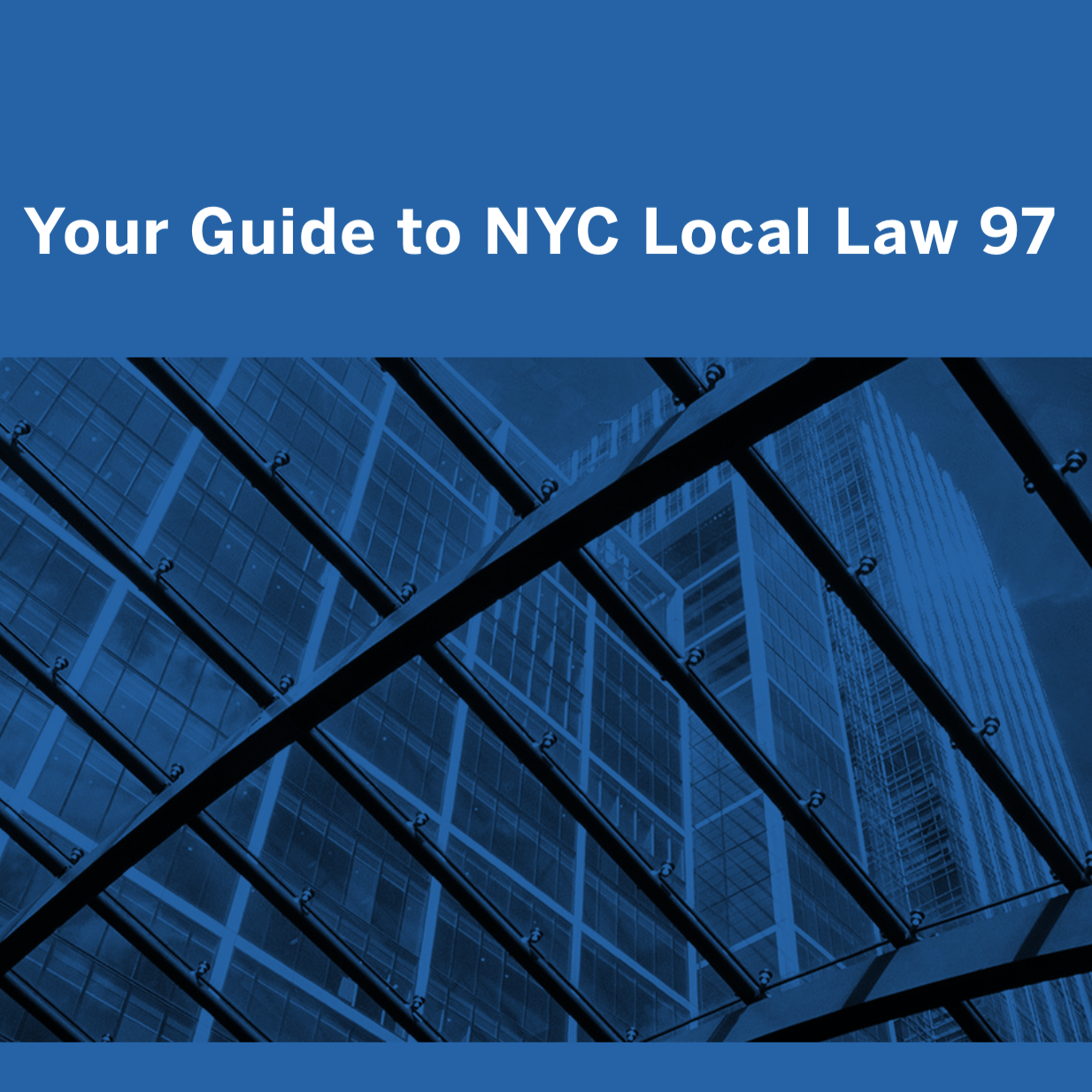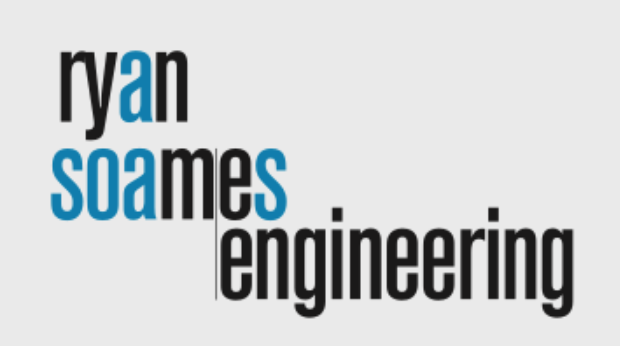
NYC Carbon Emissions – What is Local Law 97?
New York City has passed a bill into law that includes several environmentally focused initiatives. The part of the bill that is going to impact building owners most directly, Intro 1253, is a complex law that creates carbon emissions limits for most buildings over 25,000 square feet and alternative compliance paths for certain types of buildings.
On May 18th, Intro 1253 was passed into law as Local Law 97 of 2019. This law impacts over 57,000 buildings across the city with the goal of reducing building-based emissions 40% by 2030 from a 2005 baseline. The city has pledged to reduce Greenhouse Gas (GHG) emissions by 80% by 2050 (80 x 50). To assist in achieving this, the interim goal of a 40% reduction by 2030 has been put in place.
The very worst performing buildings will have to act by 2024 to curb their emissions. Hefty fines will be enforced starting in 2025 and will build until the goals are reached. You must act fast and have a plan in place by 2024. Certain building types including city-owned buildings, affordable housing, hospitals and houses of worship will have alternative compliance options if they cannot hit the carbon intensity limits. To comply, building owners must submit an emissions intensity report stamped by a registered design professional every year starting in 2025 or pay substantial fines.
What Does This All Mean?
A threshold has been set for Greenhouse Gas (GHG) Emissions for buildings based on their usage type and square foot area. Buildings GHG emissions are calculated using their annual energy usage. Buildings which exceed their GHG emissions thresholds will be fined.
Buildings over 25,000 gross square feet must meet annual whole-building carbon intensity limits during each compliance period based on building type or prorated for mixed-use buildings.
How Does it Affect You?
Are you required to report your energy and water usage each year under Local Law 84? If you are, then the chances are that you will be required to comply with the Greenhouse Gas Emissions (GHG) limits mandated in Local Law 97 or face a fine for non-compliance. To comply, building owners must submit an emissions intensity report stamped by a registered design professional every year starting in 2025 or pay substantial fines.
What Happens if I Don’t Comply?
There are steep fines for buildings which don’t comply. Building owners will be issued violations and fined $268 per metric ton that their property exceeds the annual carbon emissions thresholds – every year. There are also fines for not submitting a LL97 report or for submitting a false LL97 report. Ryan Soames has recently been contracted by a number of our clients to recommend Energy Conservation Measures (ECM’s) for their properties. If the recommended ECM’s are installed they will reduce energy consumption, improve the energy efficiency letter grades which are required by Local Law 33 to be displayed at the main entrances, and reduce the potential fines under Local Law 97.
What Next?
Building owners will be required to report their Greenhouse Gas (GHG) Emissions starting on May 1st, 2025. The reports must be prepared and submitted by a licensed Professional Engineer (PE) or a Registered Architect (RA). The GHG emissions thresholds set by the city will punish the worst performing buildings first and punitively punish more adequately performing buildings thereafter.
The time to act is now. The first reports are to be submitted in 2025 and will be based on the building’s energy usage over the calendar year 2024. Engage a Professional Engineer now to help determine what will give the greatest energy savings for the least capital expenditure. Don’t wait until it is too late and risk non-compliance, violations and fines. The information needed to calculate the building’s current annual GHG emissions is contained in the Statement of Energy Performance (SEP) generated when the Local Law 84 Energy Benchmarking is performed. If you send us the most recent SEP, we will perform the analysis and let you know how Local Law 97 will affect your property.
How Do I Reduce My Carbon Emissions and Prepare for Compliance?
All buildings should start developing long-term energy and carbon reduction strategies today to meet or exceed the emissions performance targets. This process takes time and to be successful, requires input from numerous stakeholders including internal and external experts, tenants, building operations, ownership and management. A proper energy and carbon management plan should evaluate all potential energy and carbon reduction initiatives in the near, medium, and long term:
• Base building HVAC
• Common area lighting
• Sensors and controls
• Tenant lighting, plug loads and HVAC
• Retail and ground-floor tenants
• Operator and occupant training
If you are completing or recently completed your Local Law 87 energy audits, that can be a good place to start. If you haven’t started Local Law 87 yet, we can help you to consider longer-term energy savings strategies in the analysis even if it expands the scope or cost of the energy audit. It’s worth it since we will already be analyzing your systems looking for energy saving opportunities.
What About My Tenants?
Tenant energy consumption plays a big role in overall energy use and therefore also represents a huge opportunity for savings. Reducing your building’s overall energy and carbon intensity will not be possible without collaboration with your tenants. Meet with tenants to discuss energy efficiency when they are moving in and building out their spaces. Also meet with existing tenants to discuss energy upgrades that can be performed mid-lease that could lower their energy bills.
NYSERDA has an incentive program, the Commercial Tenant Program, that will pay for some or all of the cost of identifying energy reduction opportunities in new and existing tenants’ spaces.
Contact Us
To ensure that your building is in full compliance with the requirements of NYC Local Law 97 or you need to discuss further how we can assist you with the design, please do not hesitate to reach out to our office.
Ryan Soames Engineering Can Help
DR. WILLIAM SHOARD
P.E., CEM, LEED AP, WELL AP
RYAN SOAMES ENGINEERING
49 WEST 45TH STREET, 3RD FLOOR
NEW YORK, NY 10036
TEL:+1 (646) 369-7804
EMAIL: WSHOARD@RYANSOAMES.COM
Dr. William Shoard has 30 years of experience in the HVAC industry with over 20 years in New York City. Will performs and oversees the building energy audits carried out by Ryan Soames Engineering. Being passionate about low energy buildings, Will has a wealth of engineering knowledge having performed energy reduction related studies for many buildings in New York City. In addition, Will has designed MEP systems for some of the most prestigious low energy buildings globally.
As a licensed Professional Engineer (PE), a LEED Accredited Professional (LEED AP), a Certified Energy Manager (CEM) and a PhD in low energy buildings from the University of Manchester, Will’s knowledge extends beyond New York City. He was a member of the UAE Green Building Council when debating a LEED system for the Middle East and a National Academies panel member in Washington DC to evaluate renewable energy options as revenue generation streams for airports nationwide.
Qualifications:
PhD in Thermal Modeling of Buildings
Professional Engineer (P.E.)
Chartered Engineer in the UK (CEng)
LEED Accredited Professional (LEED AP)
WELL Buildings Accredited Professional (WELL AP)
Certified Energy Manager (CEM)
Or Contact:
BRYAN D. COTTON, LEED AP, DCEP | Managing Principal
TEL: +1 (347) 920-8609 | BCOTTON@RYANSOAMES.COM
